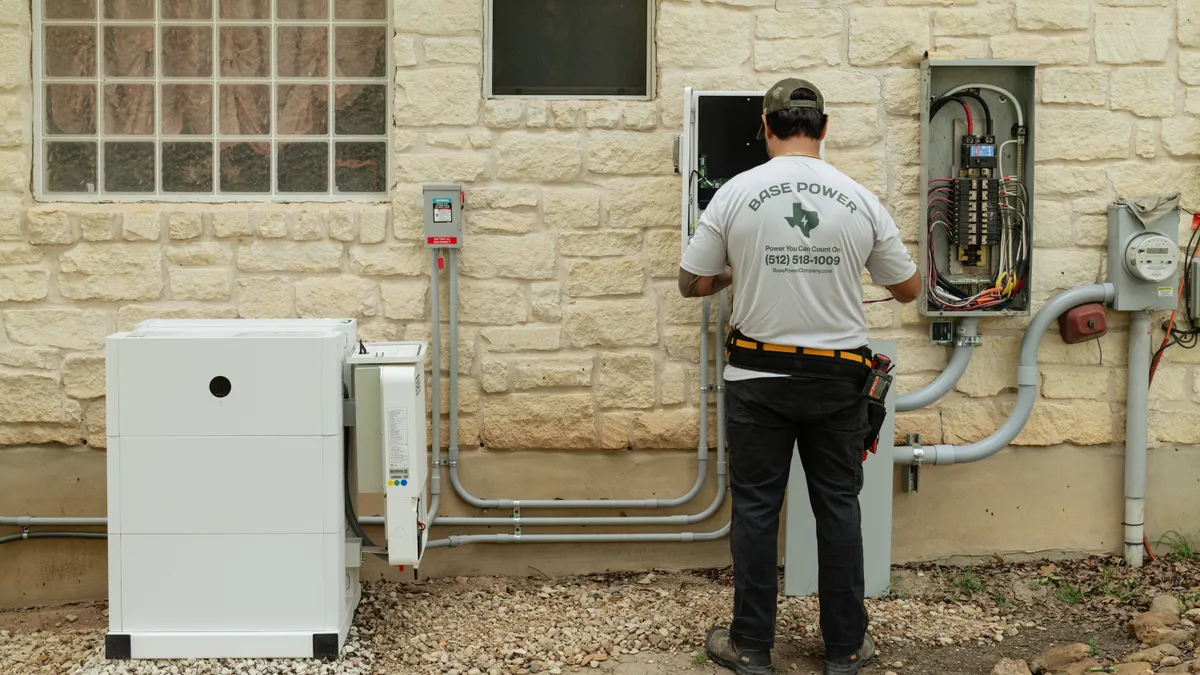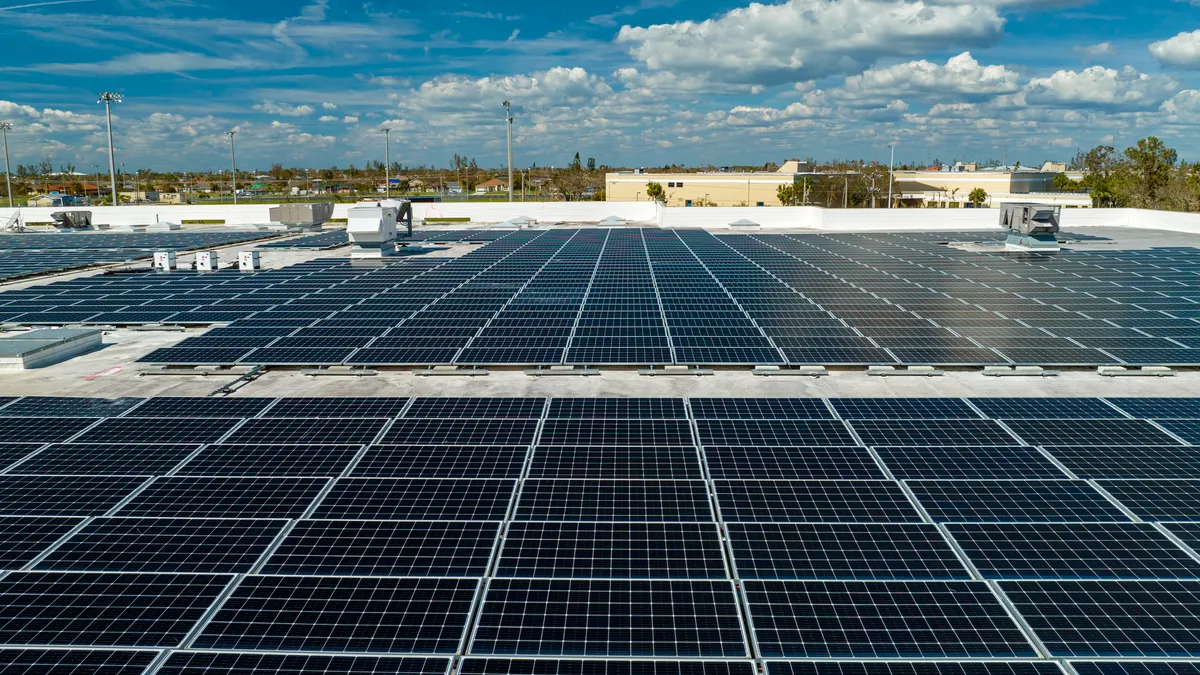The following is a contributed article by Astrid Atkinson, co-founder and CEO of Camus Energy, Dr. Varun Sivaram, senior research scholar at Columbia University's Center on Global Energy Policy, and Richard L. Kauffman, chairman of the New York State Energy Research and Development Authority.
The technology to create virtual power plants made up of distributed energy resources (DERs) is here. They can replace conventional, fossil-fueled power plants and enable a cleaner, cheaper and more resilient grid. The Federal Energy Regulatory Commission (FERC) delivered a boost in 2020. Its Order 2222 allows aggregations of DERs to participate in wholesale electricity markets through sales of power and participation in Demand Response (DR), capacity and ancillary services markets.
This is a promising start. But just allowing DER participation won’t realize the full potential of virtual power plants. Aggregation alone is only one element of the capability to marshal DERs to meet system objectives. It will also be critical for distribution system operators (DSOs) to monitor and operate local grids to enable true virtual power plants.
Regulators and system operators should invest in no-regrets digital capabilities. DSOs will need software platforms that "virtualize" the grid, using software and protocols to stitch together end-to-end visibility and control over the grid, down to the level of DERs. They will also need to design interfaces to coordinate with DER aggregators and talk to transmission system operators, facilitating virtual power plants just as reliable and powerful as traditional central stations. All of these software platforms, standards and protocols should be designed for interoperability and, ideally, open-sourced. Fortunately, the power sector can derive inspiration from other sectors — from cloud computing to telecommunications — where virtualization has been a smashing success.
While these digital upgrades are just one part of the fundamental change needed to transform the legacy model of electricity systems, they are a critical enabler to increase the efficiency and resilience of the grid while realizing the value of DERs.
The unrealized promise of virtual power plants
From Australia to Europe to the United States, aggregations of DERs — such as utility-scale batteries, building cogeneration, electric vehicles, distributed solar, industrial loads and residential appliances — are already providing grid services, shaving peak demand, bolstering system frequency and more.
The allure of virtual power plants is clear. As intermittent wind and solar power surges onto the grid and displaces conventional generators, grid operators will increasingly struggle to balance supply and demand in real-time. Hybrid renewable plants equipped with storage will help, as could new transmission links. But orchestrated DERs will be needed to plug an important flexibility gap. Moreover, DERs can boost resilience to extreme weather — such as recent outages in Texas and California — and cyber attacks. Finally, coordinated operation of DERs could substitute for expensive grid upgrades and save customers money.
But today’s virtual power plants cannot yet achieve these system objectives. Conventional generators can precisely modulate their output, provide ancillary services, verify their performance and demonstrate their reliability. Virtual power plants that aggregate hundreds of megawatts (MW) of DERs without any knowledge or control of the distribution network to which the DERs are connected can cause a number of unexpected effects.
At the local level of distribution systems, coordinated DER dispatch — imagine simultaneously adjusting thousands of thermostats or discharging a collection of batteries — can cause unexpected voltage fluctuations, compromising reliable service, or damage power lines and equipment not designed for two-way power flow.
As aggregators exercise control over a mushrooming set of DERs, they might respond to wholesale price signals by dispatching thousands or even millions of devices; but in doing so, they risk triggering a cascading grid failure. Malicious actors might seek to manipulate markets or even seek to bring down the grid, expositing grids to new models of cyberattacks, such as Denial of Service attacks, previously seen in internet service environments
Now that FERC Order 2222 has opened the floodgates to an influx of DER aggregators participating in bulk power markets, transmission system operators could struggle to cope. Their systems are configured to operate efficient, reliable markets among a limited pool of large generators. By contrast, they are unprepared to handle large numbers of DER aggregations, verify that DERs are performing as expected, and protect distribution and bulk power networks.
How distribution system operators can enable virtual power plants
DER technology is ready to provide benefits to the grid. What’s needed to enable true virtual power plants is for distribution system operators (DSOs) to combine knowledge and operation of the distribution network with DER aggregation in a way that doesn’t slow the pace of harnessing the potential of DERs.
Various different models for the DSO are under review around the world. In New York, for example, the Reforming the Energy Vision initiative designated distribution utilities as the DSOs. In Australia, the transmission system operator AEMO is experimenting with an independent DSO model. In this model, the DSO platform would accept bids from DER aggregators as well as information on network constraints from the distribution utility. By marrying the two sets of information, a DSO platform would enable aggregators to offer energy services to the transmission operator without endangering system reliability. Similarly, Jon Wellinghoff, former FERC Chair, among others, has argued that DSOs should be independent of distribution utilities and should be modeled as non-profit market operators, similar to wholesale Independent System Operators.
Although these are noble experiments, too many grids have made no effort towards a DSO of any kind. We cannot wait for dueling DSO models to play out and then hope that other grids will adopt one. Nor can we wait for different DSOs to develop their own software platforms. In fact, regardless of who the DSO is, there is a need to design a framework for a software system that brings capabilities that do not exist today in most electric power systems. Such a system will have several design requirements.
First, it should create visibility down to the grid edge. Today, distribution utilities do not typically have real-time awareness of the output of DERs such as batteries, rooftop solar arrays or community solar plants. They also do not have a single view of the entire network, spanning distribution substation equipment, feeder circuits and DERs, to monitor power flows and voltages in real-time and to identify dangerous bottlenecks.
Therefore, an immediate priority is building software systems to "virtualize the grid." Doing so would enable a DSO to bring together widely disparate sources of data — say from a dozen different smart meter brands, a range of inverters and electric vehicle chargers, and an assortment of distribution switches, transformers and reclosers — into a single platform. Even though the different streams would have varying levels of data gaps and reliability, clever software and statistical models can produce a highly reliable and dynamic view, at a glance, of the entire network.
Although a radical advance for the electric power system, these capabilities are standard issue for the technology sector. Virtualization has transformed whole industries, from cloud computing to telecommunications.
Second, the DSO’s software system should enable it to interface with DER providers and aggregators as well as with transmission system operators. DSOs should build capabilities to help aggregators marshal DERs, register offers of services, and evaluate the system impacts of coordinated DER operation. DSOs could even operate distribution markets to compensate DER aggregators for their services to the distribution grid, unlocking additional revenue streams for virtual power plants in addition to their participation in wholesale markets.
In addition, DSOs and transmission system operators should collaborate to develop software, standards and protocols to enable DSOs to share critical information validating that a DER aggregator will in fact be able to perform as required. Armed with this assurance, transmission system operators could more easily treat DER aggregations analogously to how they dispatch central power stations.
Third and finally, the DSO’s software platform should enable hierarchical control and interoperability. An important lesson from the technology sector is that the DSO does not need to operate in a command-and-control fashion, directly controlling DER aggregations. Rather, it can provide global coordination, leaving aggregators free to innovatively harness DERs. This hierarchical, federated system of control would resemble the model by which the Internet works. As in the internet, it will be critical to develop interoperable software tools and standards and protocols that can be used across the country. Open-sourced software can improve collaboration and widespread use compared with proprietary tools.
Recommendations
DERs without a DSO are only half of a loaf. And a DSO without the right software capabilities is likewise insufficient. We don’t need to wait for the details of the DSO model to be ironed out. We can start building the digital capabilities that any DSO will need. Three sets of actors — federal and state regulators; distribution utilities; and the DER industry — can play a role developing these capabilities.
Both federal and state regulators should immediately begin investing in developing the tools to enable real-time visibility across the distribution network. Distribution utilities should recognize that playing the role of the DSO is an opportunity worth seizing. They should begin projects to integrate telemetry from a range of different equipment on the distribution grid and on the customer side of the meter, to prove to regulators that they can perform the DSO role.
Aggregators should organize industry consortia to push for technical standards for how DSOs can register, verify and approve services offered by DER aggregators. Aggregators should not oppose the introduction of a well-conceived DSO intermediary between them and the wholesale markets. Without DSOs to add valuable network visibility, aggregators will remain limited in their ability to bring the full potential of virtual power plants.
That potential is no mirage. We know from other sectors that tools exist to operate highly complex, distributed systems in an efficient and reliable manner. It’s time we applied those lessons to the grid.




















